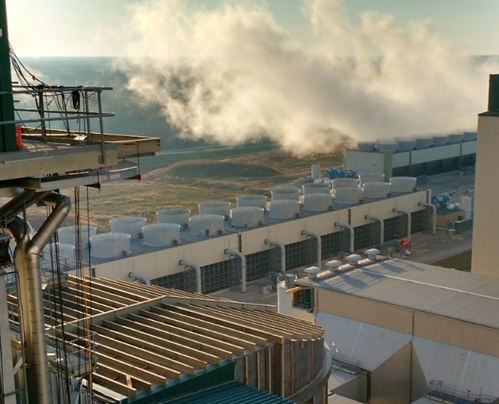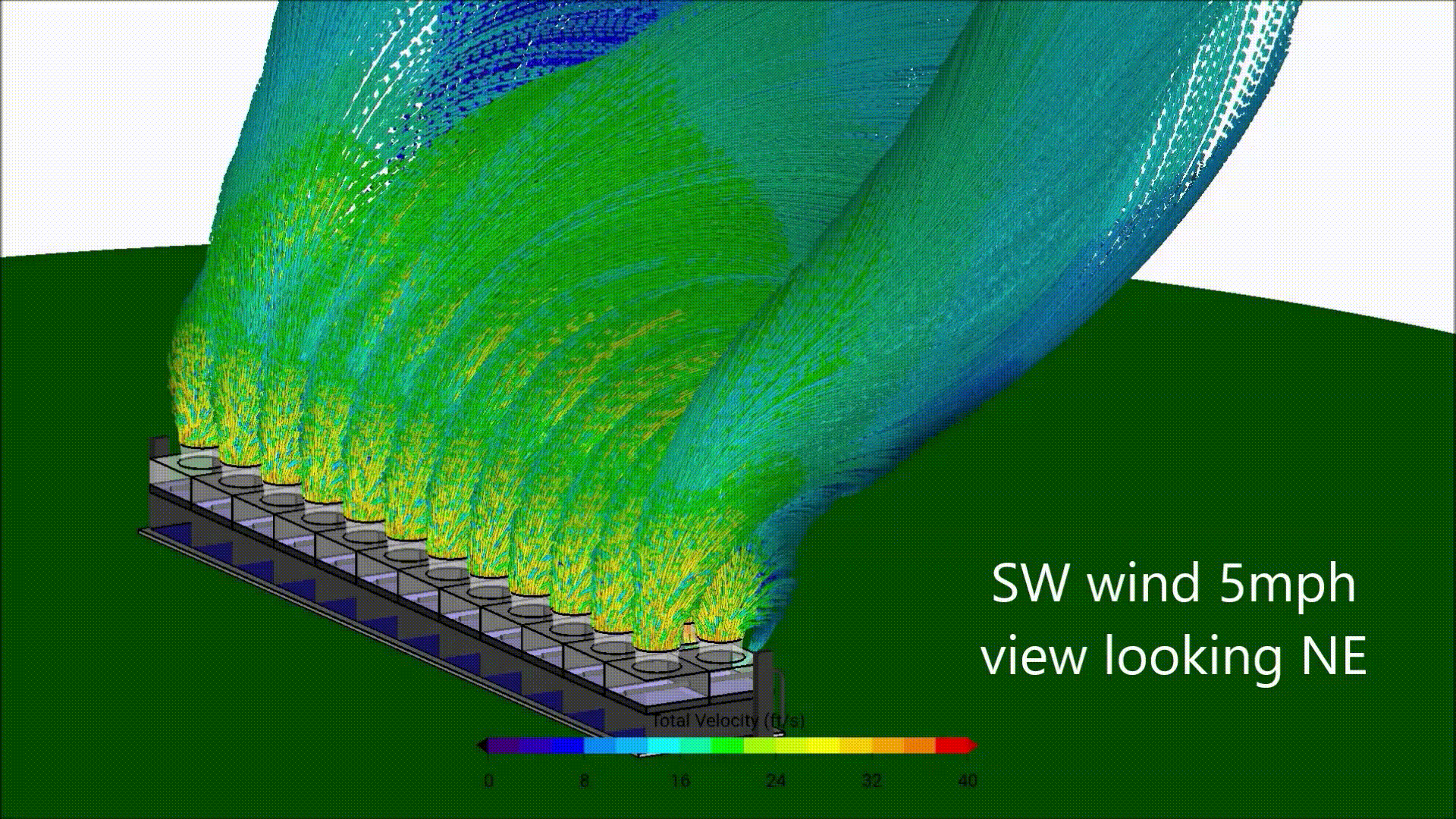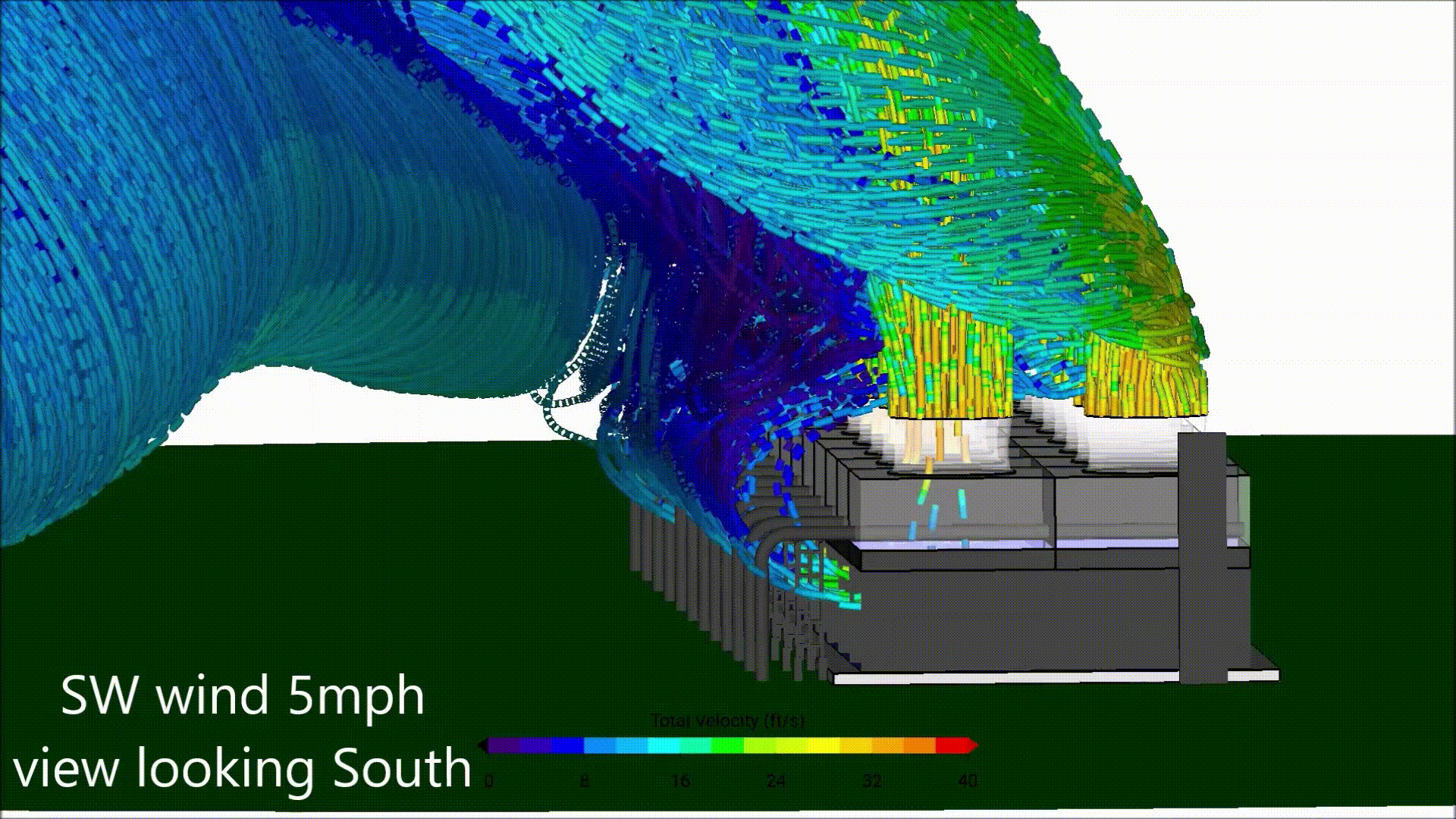Why is My Cooling Tower Underperforming?
by Kelly Hile
Using Computational Fluid Dynamics (CFD) to Uncover the Mysteries of Cooling Tower Performance
Cooling towers are widely used in industrial processes for dissipating large amounts of heat. Cooling towers are typically a cost-effective and energy-efficient way to achieve cooling. However, if they are not operating at design capacity, overall plant efficiency can be negatively impacted.
When your cooling system is not removing as much heat as it should, it can be difficult to identify the source of the inefficiency. Pausing operations long enough to test various parameters is cost-prohibitive and time consuming.

Cooling Towers at a Plant Site
Insights Provided by CFD Modeling
CFD modeling of a cooling tower system can reveal valuable information that cannot be gained through testing or over-simplified design equations. In particular, the CFD model has the ability to analyze flow and thermal performance three-dimensionally, and thus can detect issues that standard calculations miss. In a model, we can easily change weather conditions like wind speed, ambient temperature, and humidity. While the initial design and sizing of a system often accounts for ideal conditions or worst-case scenarios, modeling can allow for variable conditions, both in the system (like fan speed and water temperature) and external (like wind speed and direction). This can ensure that you are operating your cooling tower at an optimal efficiency for the situation at hand, whether you are at low or high capacity, and no matter what direction the wind blows.
The engineering team at Airflow Sciences recently modeled a system of cooling towers for a power plant in the Midwest. One of the models our team created was a computer simulation of the wind flow over and around a series of cooling towers.


CFD Models of Cooling Tower Flow Behavior
The resulting model revealed a recirculation of exhaust. Recirculation makes the whole system less efficient, since it causes more work for system fans and lowers the cooling potential of the system.
Simple modifications are possible to prevent recirculation, and the Airflow Sciences team can even help identify whether a modification will be effective before the physical investment is made. Will the cost to implement a change be worth it in improved efficiency? CFD models can provide a wealth of clarity to what would otherwise become a game of trial and error in the field.
Learn more :
